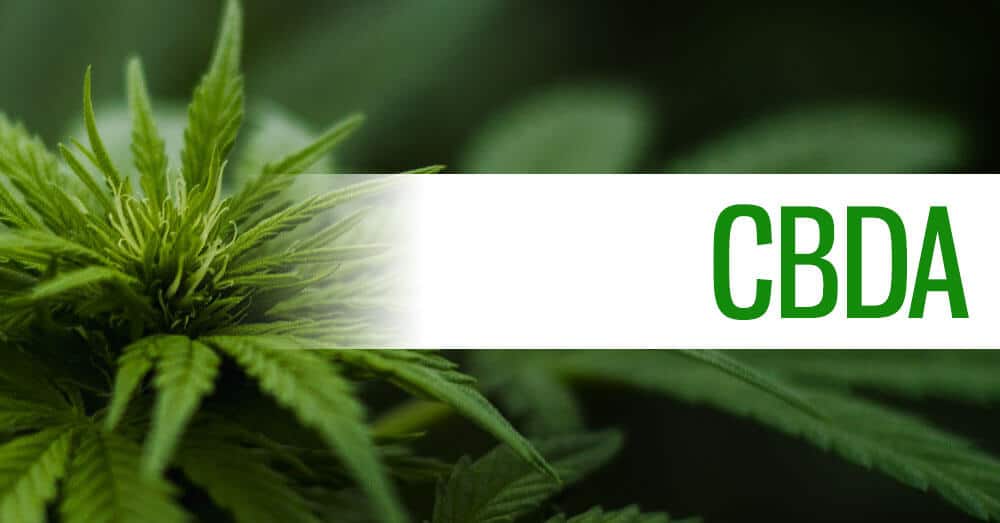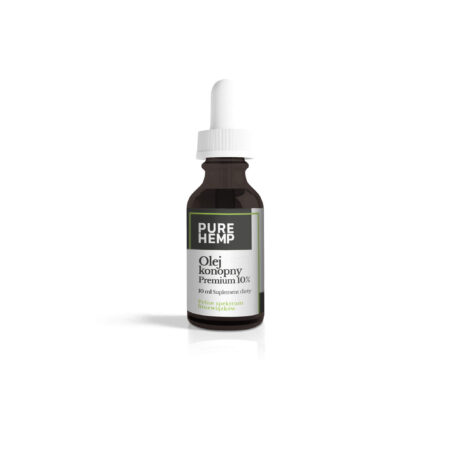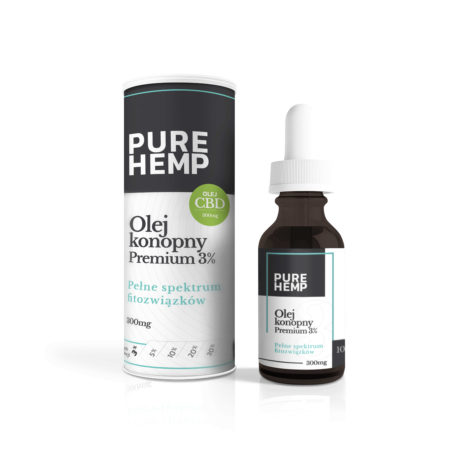Update: 14.04.2021
CBDa - what is cannabidiolic acid?
CBDa is the acid form of cannabidiol. A longer name can also be found - cannabidiolic acid.
CBDa, like CBD, is one of the cannabinoids naturally found in the hemp plant. Cannabidiolic acid is the active ingredient in hemp.
As I have mentioned many times before, some cannabinoids (including CBD) are the most perfect natural replacements for the endocannabinoids produced by the body - anandamide and 2-AG. Some of them are used in the regulatory processes of the human body for which the endocannabinoid system is responsible by binding to its receptors. CBDa, however, does not work in this way, but about that in a moment. This has to do with the tendency of living organisms to maintain a state known as homeostasis.
Several stages can be distinguished in the growth process of the cannabis plant. One of these is the stage of formation of the cannabinoid acids - CBDa, THCa, CBGa, CBDa, etc.
This stage takes place before the actual cannabinoids begin to form in the plant (cannabidiol, THC, CBG etc.).
Cannabinoid acids are precursors of cannabinoids proper.
One of the first - if not the first - cannabinoid acids to form in the plant is the cannabigerolic acid CBGa. It is from CBGa that CBDa is formed. As the plant grows, cannabidiolic acid gradually converts to cannabidiol CBD under the influence of heat.
CBDa is therefore the specific building material for CBD.
CBDa converts to CBD when exposed to heat, and this process is called decarboxylation.
In simple terms, the process looks like this: CBGa -> CBDa -> CBD.
And figuratively yes:

Interestingly, the acidic forms of cannabinoids are present in the living plant and the decarboxylation process starts during the drying of the cannabis plant and the preparation of the material for further processing.

CBDa action
As for the CBDa effects of this cannabinoid on the human body, the mechanisms are still not fully understood. What we know for sure today is that CBDa:
- does not have an intoxicating effect,
- affects the action of serotonin 5-HT receptors even 100 times more potent than CBD
- on 5-HT receptors acts in a very similar way to SSRIs
- does not bind directly to the CB1 and CB2 receptors of the endocannabinoid system
- blocks COX-2 enzymes related to the occurrence of inflammatory conditions in the body
- shows surprising similarity to the molecular structure and action of non-steroidal anti-inflammatory drugs (blocking COX-2 enzyme)
- high bioavailability - the body metabolises cannabidiol acid faster and with less effort
It is worth comparing this information with the effects of CBD, which I wrote about here: https://purehemp.pl/baza-wiedzy/cbd-dzialanie/
CBDa properties
Regarding the properties of CBDa, based on the mechanisms of action known so far, it can be indicated that CBDa has the following properties:
- Anti-inflammatory
- Analgesic
- Anticonvulsants
- Antidepressants
- Anti-cancer (a pharmaceutical company patented an anti-cancer drug based on CBD and CBDa as early as 2018: check out)
This list is probably not complete. Research is still ongoing - including those at the human clinical trial stage. The potential for the health-promoting properties of CBDa and other cannabinoids is enormous. Corporations and groups of independent research teams around the world are running a kind of race to confirm (or deny) the medicinal properties of CBDa. Above, I have presented only those that, given the available data and sources, appear to be the best documented and proven.
CBDa use
Given these properties, cannabidiol acid CBDa in combination with other cannabinoids - primarily CBD , CBG and THC and their acidic forms - is already or is likely to soon find use in areas such as:
- CBDa medicinal/therapeutic use:
- Treatment of inflammatory conditions: of any type, nature and origin
- Treatment of certain cancers: breast cancer, lung cancer, liver cancer, pancreatic cancer, melanoma, ovarian cancer, stomach cancer, kidney cancer, bladder cancer (check out)
- Treatment of epilepsy and seizures
- Support treatments for depression and anxiety disorders
- Synergistic support of pain therapy especially symptomatic pain therapy in inflammatory conditions
- CBDa prophylactic use:
- Prevention and minimisation of symptoms: nausea e.g. in patients after chemotherapy
- CBDa supplementation use:
Yes, cannabinoids (CBD and THC, among others) that bind to the CB1 and CB2 receptors of the endocannabinoid system can replace endogenous cannabinoids, so to speak, make up for their lack in the body. However, according to current knowledge, CBDa does not bind to the receptors of the endocannabinoid system and does not act like endogenous cannabinoids.
Cannabidiol acid CBDa in cbd raw oils?
- The problem with CBDa is its low stability.
Cannabidiolic acid, as written in the introduction, undergoes decarboxylation when exposed to temperature. In the process, it is converted into the specific form of cannabidiol - CBD.
Moreover, decarboxylation does not require high temperatures. The process occurs over time even at room temperature in a bottle of oil standing on a home shelf.
- What does this mean?
Otóż zawartość (stężenie) CBDa podawana na opakowaniach olejków cbd raw może być inna (wyższa) niż jest w rzeczywistości w buteleczce w momencie zakupu i stosowania.
- Why is this so?
Manufacturers are subjecting cbd oils raw testing of phytocannabinoid compositions just after the production process of a production batch.
Their content is determined by a so-called certificate.
The cannabidiol acid content of such freshly produced oil will be higher and the CBD content lower than the day it was bought in the shop after just a few weeks.
This problem applies to cbd raw oils that do not undergo laboratory decarboxylation.
- But how does that mean you are being misled?
If you are buying cbd raw oil and the manufacturer/vendor claims that the oil contains x% CBDa, it is very possible that this information is no longer valid at the time of purchase, and the concentration of cannabdiolic acid in the oil you are holding in your hand is lower than it was on the day of the pre-marketing test. In turn, the CBD content in its actual form may have increased - by about the same amount by which the CBDa concentration has decreased.
CBD oil decarboxylation - what is this process used for?
Decarboxylation serves to standardise the process and minimise the risk of allegations of misleading customers.
High-quality, laboratory-based production of cbd hemp oils and the regulations governing the marketing of such products for food and as dietary supplements require precision.
If the manufacturer indicates on the packaging of the oil that it contains, for example, 3% of cannabidiol acid (which may have been true on the day of the post-production test), and the customer tests it again a few months later and finds that only 1% of the original 3% remains, this may lead to accusations of misrepresentation. By the way, the content of the cannabidiol itself will also be different - it will have increased by the approximately 2% that has been lost from the acid form.
Some manufacturers, in an attempt to be as close to the truth as possible, list the CBD and CBDa content together as e.g. CBD+CBDA. This is the case, for example, with our CBD capsuleswhich are 750 or 1,500 mg per pack.
Another way to deal with this problem is laboratory decarboxylation.
In such a release, decarboxylation is accelerated so that the final product does not cause unnecessary controversy and the risk of accusations of misrepresentation is minimised.
Decarboxylation is a thermal process, not a chemical one. It uses temperature not reagents.
This is important because authentic, high-quality cbd hemp oil should be completely free of any chemical compounds other than those naturally found in hemp.
Thanks to decarboxylation, cbd oils are standardised for their CBD content while excluding the problem of the concentration of cannabidiolic acid in the product falling over time.
Cannabidiol acid in dried hemp and for vaporisation
Cannabidiolic acid is found in dried hemp. There is usually quite a lot of it there. The problem is that the temperature of smoking or vaporisation converts cannabidiolic acid into CBD - similar to what happens in decarboxylation under the heat of the sun, but because of the temperature it happens much faster. The result? You don't absorb cannabidiol acid at all from smoking dried or vaporising.
What does the future hold for acidic forms of cannabinoids?
The future of acidic forms of cannabinoids is looking increasingly warm.
From press reports "Jerusalem Post" shows that Prof. Mechoulam is working on synthetic forms of the acidic forms of cannabinoids. The main aim is to create molecules that do not decarboxylate easily and uncontrollably. Such compounds would be expected to have a higher potency than the actual forms of cannabinoids. The research of Prof Mechoulam's team seems to confirm this in the context of, among other things, the treatment of colitis and the minimisation of epileptic seizures in people suffering from epilepsy.
The aforementioned study of the anti-inflammatory efficacy of cannabis acids was repeated six times indicating that the potency of their anti-inflammatory effect was comparable to steroid drugs with the side effects of cannabis acids being minimal compared to the risks associated with steroid treatment. By the way, they are definitely more potent and effective than non-steroidal anti-inflammatory drugs such as Ibuprofen.
What other diseases will it be possible to address with cannabis acid therapy in its synthetic form?
- obesity
- psoriasis
- atopic dermatitis
- infections and pneumonia
- nausea
- depression and anxiety
Perhaps the direction of events will mean that such synthetic, laboratory-produced acidic forms of cannabinoids will find wider interest and use in drug production, while proper forms of cannabinoids will remain in the supplementation domain. One thing is certain - the production process for synthetic cannabinoids can be patented, natural cannabinoids cannot.
In the meantime, we invite you to take advantage of the shop's offer and purchase CBD oils:
You can find disclaimers regarding the content published on the pages of the knowledge base by clicking here.

